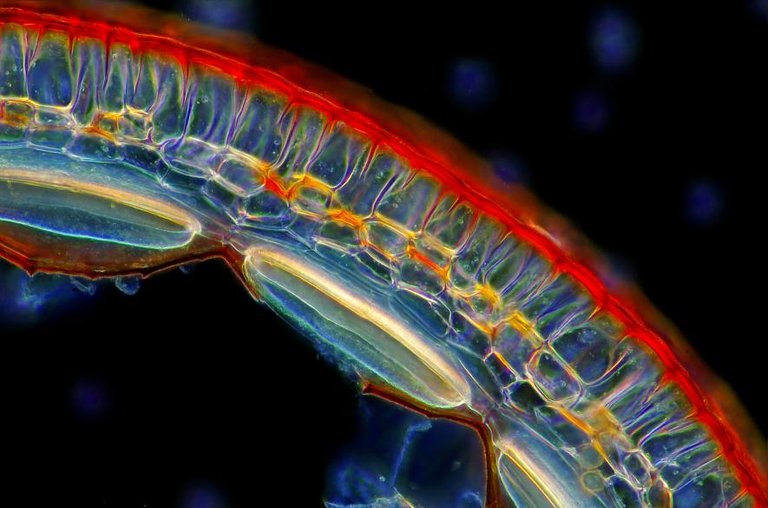It's not easy being green; on a cellular level, our leafy brethren are staggeringly complex.
DAY TO DAY, it might be tempting to take plants for granted. But you'd do so at your peril; our leafy brethren are staggeringly complex, as revealed when they're put under the microscope. Continue....

To reproduce, moss unite their sperm and egg, forming a cell that grows into a stalk tipped with a capsule (seen here in cross section). Spores mature within this capsule, which then bursts and lets the spores drift away.

First scientifically described in 1875, the Solomon's seal (Polygonatum multiflorum) is a perennial that lives in shaded areas across temperate Europe and Asia. Each arching stem (seen here in cross section) bears dangling flowers and between eight and 17 leaves.

Stomata, plants' pores for gas exchange, stand out against the leaf epidermis of this lily of the valley (Convallaria majalis). Two guard cells flank each pore, which opens or closes when the guard cells gain or lose water.

Mosses' spore-capsule method of reproduction has worked spectacularly well for the spongy plants. Botanists have catalogued some 10,000 species of mosses, and fossilized mosses may date back more than 300 million years.
Credit Goes: MICHAEL GRESHKO
Reference : National Geographic

I love this it is really amasing!
Thanks
Congratulations @buzzingsushant! You have completed the following achievement on Steemit and have been rewarded with new badge(s) :
Click on the badge to view your Board of Honor.
If you no longer want to receive notifications, reply to this comment with the word
STOPTo support your work, I also upvoted your post!